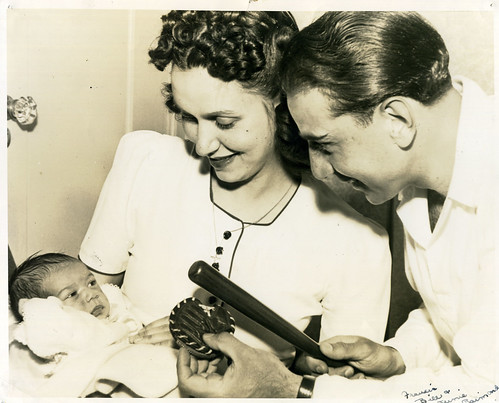For anyone who missed it, I posted something this morning imagining Jackie Robinson on the “Big Red Machine” Cincinnati Reds of the 1970s. In putting together my piece on Wednesday, I contacted Sports Illustrated writer Joe Posnanski, who I interviewed in September and who wrote a 2009 book on those Reds. Posnanski got back to me this morning with a long, thoughtful email (I assume he was busy yesterday evening with Game 1 of the World Series.)
In its entirety, Posnanski’s email is as follows:
Graham,
Well, it goes without saying by me that Jackie Robinson had the most remarkable individual career in baseball history. No other player — not Ruth, not Williams, not even Larry Doby — faced and overcame like Jackie Robinson.
But, it seems to me you are right — people forget just how good a player Jackie Robinson really was. I’m in the midst of doing a competing list of the “32 most complete players in baseball history” — that is the 32 players who could do EVERYTHING well — and, not to give anything away, Jackie Robinson is one of the few to make both lists.
But one question that has always fascinated me is this one: How much of Jackie Robinson’s greatness came BECAUSE of the conditions he faced. That is to say, Robinson was one of those rare players who thrived on his circumstances, who played with a fury, who almost seemed to need a cause. It’s famously known that baseball was his third best sport in college; it seems unlikely to me that with the Olympics out there and with the NFL in full force that Robinson even would have chosen baseball in 1964 the way Morgan did.
And if he had chosen baseball, I wonder if he would have or even could have been as driven a player. This is an impossible question to answer, but a fascinating question to consider. Robinson was absolutely a player with similar talents to the great Joe Morgan. He hit for average better than Morgan, he walked, he hit for power, he was a legendary base runner (maybe the best of all time) and he was terrific defensively wherever the Dodgers put him.
But don’t underestimate Morgan. He played in a harder hitters era and he played in less of a hitters ballpark. And in his six-year prime with the Reds (1972-77) he hit .301/.429/.495 with a 159 OPS+ — higher over that whole period than Robinson ever managed for a single season. His six year WAR was an almost unbelievable 57.2, which is pretty close to what Robinson did over 10 seasons.
I do think Robinson, had he started in baseball younger, had he played in an era where he did not have to carry that great burden and all that, would have had a chance in some ways to be an even greater player. But in other ways, he would have been a different player too. It’s fun to think about. But as great as people think Joe Morgan was, it seems to me he was probably even better than they think.
